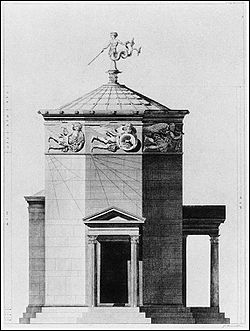
In the ancient Mediterranean world, the classical compass winds were names for the points of geographic direction and orientation, in association with the winds as conceived of by the ancient Greeks and Romans. Ancient wind roses typically had twelve winds and thus twelve points of orientation, sometimes reduced to eight or increased to twenty-four.
Originally conceived as a branch of meteorology, the classical wind rose had only a tentative relationship with actual navigation. The Classical 12-point wind rose was eventually displaced by the modern compass rose (8-point, 16-point and 32-point), adopted by seafarers during the Middle Ages.